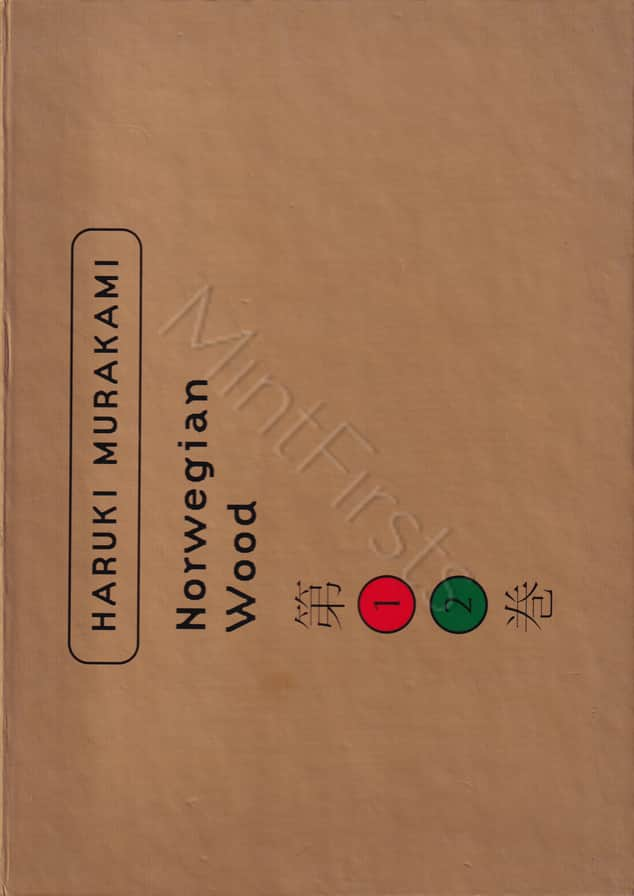Established
2004
Relaunched
2024
Our booksHow we tradeAbout usCredits & thanksYour account
- Home page
- Our books
- How we trade
- About us
- Credits & thanks
- Your account
- Your cart
MENU
Norwegian Wood
First UK edition of Haruki Murakami's Norwegian Wood ¹

Haruki Murakami; translated by Jay Rubin
First UK edition. The trade issue. Complete in 2 vols. Small 8vos., [viii], 247pp.; [viii], 247pp. Decorated card wrappers (vol. 1, red + gold; vol. 2, green + gold) after the Japanese original. Housed in publisher's clamshell box.
First Authorized English translation by Jay Rubin. Norwegian Wood was previously translated into English (by Alfred Birnbaum, 1989) in an edition published by Kodansha International Ltd for its English Library series and intended solely for sale in Japan. Originally published by Kodansha in 1987 as Noruwei no mori.
Author's fifth novel. A nostalgic look at late 1960s Tokyo student life – a time of rebellion and burgeoning sexuality – told in a first-person narrative.
Its straightforward lyricism, as opposed to his usual experimental, allegorical style, remains unique in Murakami's canon. "I could have been a cult writer if I'd kept writing surrealistic novels. But I wanted to break into the mainstream, so I had to prove that I could write a realistic book. That's why I wrote that book. It was a best-seller in Japan and I expected that result." Presciently, hugely popular with Japanese youth, Norwegian Wood turned Murakami into a domestic superstar – much to the reclusive author's dismay – with well over 4 million copies sold to date.
Murakami adapted the first section of the novel from an earlier short story, "Firefly", which was subsequently included in the collection Blind Willow, Sleeping Woman (2006). A film adaptation by the same name directed by Tran Anh Hung, and starring Ken'ichi Matsuyama, Rinko Kikuchi, Kiko Mizuhara, Kengo Kôra, and Reika Kirishima, was released in 2010. "A masterly novel." –New York Times
[John Wray, "Haruki Murakami: The Art of Fiction No. 182," The Paris Review 170 (Summer 2004)]
edition
first UK
format
trade paperback
publisher
The Harvill Press
published in
London
publication year
2000
ISBN
1860468004
height × width
23 × 16.5 cm
genre
literary fiction
language
English
binding style
paper wrappers
binding state
original binding
condition . . .
fine
of slipcase
fine
GBP£ 280
EUR€ 327
USD$ 375
ref.7U6 43U